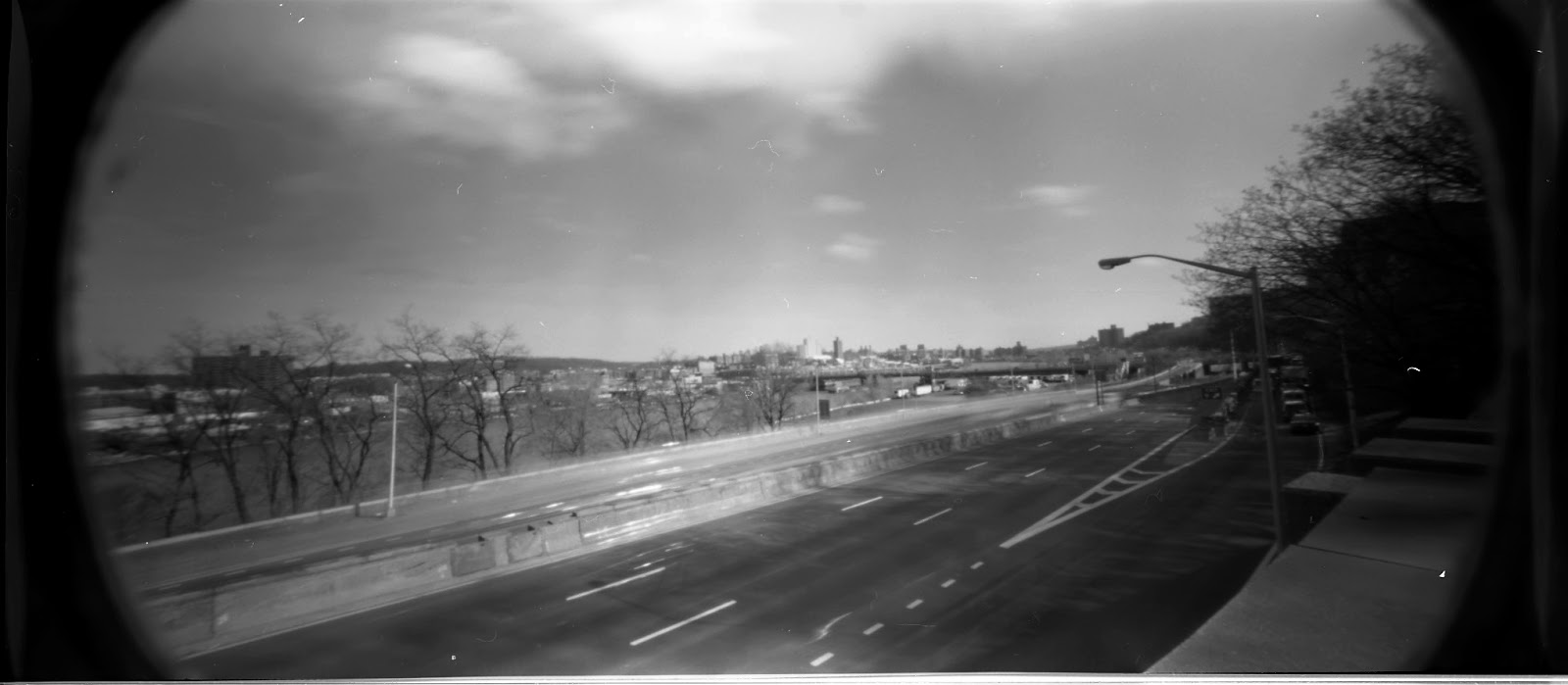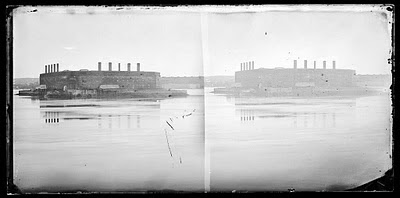My commute to work takes through the Bronx. The highway follows the Bronx
side of the Harlem River at one point. From here you get a wonderful view of
the tip of northern Manhattan Island. This area was the location of the Battle
of Fort Washington on November 16, 1776.Today, the neighborhood with the fort is
known as Washington Heights. Coincidentally, It is also the highest land point on Manhattan
Island. Checking out the
Wikipedia
page for the battle, I saw this great illustration (see below) from the New
York Library collection.
 |
Battle of Fort Washington. View from the Bronx looking
south. The Harlem River is visible with boat loads of English soldiers on their
way to land on Manhattan Island. Puffs of white smoke from the battle are seen
where troops are fighting. On the right side of the picture you can see the
rock cliffs of the Palisades along the Hudson River in New Jersey. The fort itself would be just out of
view in the center. However, I can’t tell if that is smoke or a dip of the ridge line in
that location.
|
I was thinking about this picture as I was driving home,
and looking past the modern buildings and transit artery’s, I could still glimpse
the ancient terrain features. The quality of the print is such that I thought
that maybe I could find the location or angle that it was drawn from. This has
been done with many early photographs from the civil war with remarkable
results.
Driving down the highway I try and see if I can match up the angle of view
that is similar to the print. Then I look off to my left to see what terrain feature
I could use to photograph from. I identified a wooded area under the
University. It has a road I could park and offers a high vantage point where I
could look out over the highway.
Last March the week before the leaves appeared I was able to make some photographs
of the area. I wasn’t happy with the results, partly due to the area is not
that photogenic as it exists today and I also had some camera, exposure issues.
I also realized that I was not in the right place the original drawing was made.
I constructed a Google map to get a better visualization of the area. Check
it out. I guess before the leaves pop out and obstruct the view again I will
try and get a photograph from this new vantage point.
View Battle of Fort Washington Painting in a larger map























